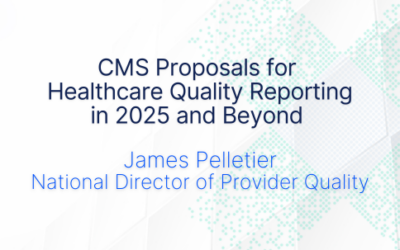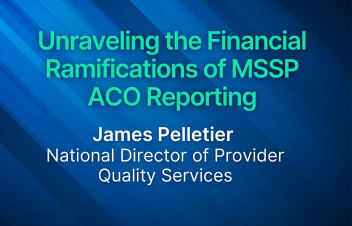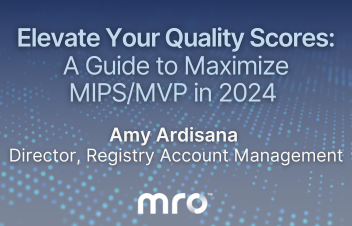Recently, I had the pleasure of presenting with my colleague Lauren Wall, RHIT, HIM Manager of Shared Services for Steward Health Care. Our presentation was the first webinar of the year for MRO, where we discussed proven methods to improve workflow, reduce costs and mitigate risk in the revenue cycle. If you were unable to attend our session, here are the highlights of what we discussed.
Collaborating for Success
Healthcare providers must find a way to work together to create efficiencies, promote compliance and retain revenue. Some simple steps to achieve these goals include the following:
- Engage key stakeholders and identify an executive champion.
- Identify a team of stakeholders representing each key area of the revenue cycle along with service line champions.
- Identify needed enhancements by capturing trends and root causes.
- Educate your team.
- Identify and track metrics with trending reports and other easily captured reports.
To create collaborative revenue cycle processes, we recommend that healthcare facilities take a few additional steps:
- Map the life of a medical record, including denials and appeals.
- Identify opportunities for record disclosure during this lifecycle.
- Refer to best practices and training to avoid unauthorized disclosure.
- Use tracking software for any denial and appeal activity.
- Monitor and trend volumes to enable transparency between departments.
- Regularly monitor activity processed in revenue cycle departments to promote a team-oriented environment, assess risk and promote effective communication.
Tools
Using tools that already exist helps to ensure your facility is taking the proper steps to create efficiency in the revenue cycle. Examples include PEPPER, OIG and TPE reports, internal audit/denial risk assessments and financial/billing information.
A PEPPER report summarizes a hospital’s Medicare claims data for diagnosis-related groups (DRGs) and discharges that have been identified as at higher risk for improper payments. An OIG report should be used to review and compare with your services. A TPE report, or Targeted Probe and Educate, identifies providers and suppliers who have high claim error rates or unusual billing practices, and items and services that have high national error rates and are a financial risk to Medicare.
Facilities should also audit their release of information (ROI) activity to ensure compliance. Since requests are very specific, be sure to satisfy each request with complete record components. Also review the denial reasons compared with records that were provided. Sometimes CERT denials include insufficient documentation. Finally, it is important to continue the audit process cycle with your revenue cycle team.
Steward Health Care
Steward Health Care is a physician owned, for profit health system based in Richardson, Texas. It consists of 36 community hospitals across 9 states and the country of Malta, over 25 urgent care centers, and 107 skilled nursing facilities. With over 7,900 beds, Steward serves about 800 communities, sees nearly 2.2 million patients annually and employs more than 42,000 people.
Like many other organizations, Steward experienced disparate processes and tracking across the business office departments. Using different systems for requests and onsite printing, among other issues, caused correspondence delays. To put this into perspective, 15% of CBO collectors spent their time processing medical records, and in just one quarter, more than $14 million in expected reimbursement was on the line due to medical record requests. Realizing the need for significant change, Steward made the decision to partner with MRO.
As a result of partnering with MRO and using the Business Office Edition (BOE) release of information implementation, a single application for a patient’s accounting of disclosure was implemented. Steward also experienced faster turnarounds for payer requests, visibility into specific payer request trends, and quicker reporting of monthly volumes and turnaround times. Through a centralized platform for all divisions, despite different CBOs, Steward saw a separation from normal ROI for payment concerns and is now able to submit records in multiple mediums.
Through this process, lessons learned led to best practices:
- Implement an accounting of disclosure single-source platform.
- Ensure a clear understanding of all platforms for ROI.
- Conduct CBO staff training on processes.
- Enable access to all required revenue cycle platforms.
- Meet often and follow up on action items.
- If multiple CBOs are involved, roll out one at a time.
- Promote communication and collaboration.
To learn more about Steward Health Care’s collaboration with MRO and how it improved efficiency in the revenue cycle, click here to request the playback recording.


